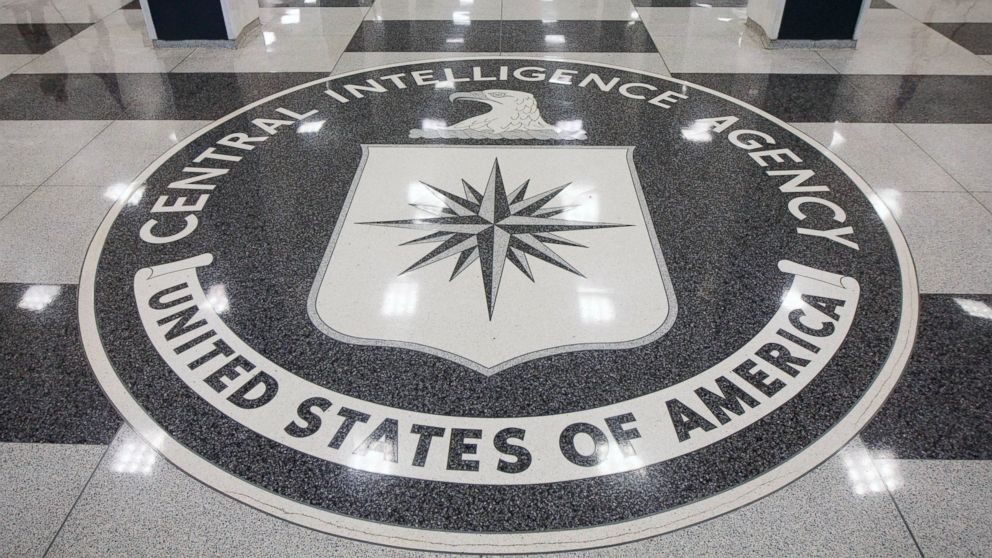What Newly Released CIA Documents Reveal About 'Torture' in Its Former Detention Program
The CIA released the documents in response to a lawsuit by the ACLU.

— -- The Central Intelligence Agency has released some 50 documents on its former "Detention and Interrogation" program in response to a Freedom of Information Act lawsuit filed by the American Civil Liberties Union.
The now-declassified documents highlight some of the methods used in what critics have characterized as a "torture" program, which was in place under the George W. Bush administration, the ACLU said in a statement Tuesday. The documents range from revealing techniques for what has euphemistically been called “enhanced interrogation," to the finding that the CIA detained the wrong individual for months.
“These newly declassified records add new detail to the public record of the CIA's torture program and underscore the cruelty of the methods the agency used in its secret, overseas black sites,” Jameel Jaffer, the ACLU's deputy legal director, said in statement. “It bears emphasis that these records document grave crimes for which no senior official has been held accountable.”
A Senate report made public in 2014 concluded that the enhanced interrogation techniques used by the CIA were not an effective means of acquiring intelligence. That report, available on Amnesty International's website, also concluded that the CIA's "justification for the use of its enhanced interrogation techniques rested on inaccurate claims of their effectiveness."
The Senate report also stated that the "interrogations of CIA detainees were brutal and far worse than the CIA represented to policymakers and others." Enhanced interrogation programs included methods such as stress positions and waterboarding, in which the subject's face is covered with a cloth and water poured over it, making the subject feel as though he is drowning.
The CIA's newly released documents encompass several hundred pages, and can be accessed online at the CIA's Freedom of Information Act reading room.
The CIA said in a statement with the release of the documents that the "CIA has released to the public 50 declassified documents -- which constitute several hundred pages -- related to the former Detention and Interrogation program."
Some major findings include new information on the death of Gul Rahman, who died while detained by the CIA in 2002, according to the CIA documents. The now de-classified report states that Rahman died of hypothermia while nude from the waist down, and "shackled in a position that prevented him from moving around to keep warm."
Another finding was that "the kidnapping and torture" of a German citizen was a case of "mistaken identity," according to the ACLU. The 2007 CIA Inspector General's report, which was part of Tuesday's document release, states that the CIA took Khalid al-Masri and kept him detained for over two months even after the agency had determined there was no justification for his detention.
During this time, the report states, al-Masri "appeared desperate and depressed and prone to thoughts of suicide." The German national conducted at least one hunger strike and lost 50 pounds while in CIA custody, according to the IG's report.
"Other new disclosures reveal the CIA’s concerns that detainees who had been tortured should be kept hidden from representatives of the International Committee of the Red Cross for the rest of their lives," the ACLU said in a statement.
"The biggest new releases are the previously secret Inspector General reports on Rahman and al-Masri," Dror Ladin, a staff attorney for the ACLU National Security Project, told ABC News today. "For Gul Rahman, the graphic details of what his portrait was like before he was tortured to death was not in the Senate report."
"It was freezing cold in the facility but they would use blankets as a reward," Ladin said, "and then in the report they actually blame him for his death. They say that because he did not eat the night before he did not have enough fuel."
Ladin highlighted the need for accountability and transparency, especially at powerful government agencies such as the CIA.
"For the longest time the CIA fought very hard to keep this program secret," Ladin said. "The CIA argued that it was a state secret. For years they have used secrecy to try and avoid ever having to account for what they did."
"I would say at this time in which people openly discuss the use of torture [in the face of terrorist threats] it is more important than ever to look back at the brutal legacy of the CIA's torture," Ladin said.
The CIA declined to comment on the ACLU lawsuit because parts of it are still pending, but a CIA spokesman told ABC News today, “The death of Rahman is a lasting mark on the Agency’s record.”
“There were significant improvements implemented following Rahman’s death, including far more stringent standards governing interrogations and safety. Further, one of the key steps we’ve taken in response to the Senate Select Committee on Intelligence (SSCI) Study is to ensure internal accountability efforts do not focus exclusively on alleged perpetrators of misconduct, but look more broadly at any systemic problems," the CIA spokesman said in a statement.




